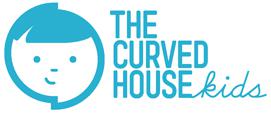Space Exploration
Explore the different kinds of ways engineers help explore space, whether it's designing spacecraft, spacesuits or homes on Mars. Activities link to materials and their uses, forces, D&T, plants and many aspects of D & T.
Space Case - Borrow the spacecraft materials kit
This activity has been created for use with the ‘Space Case’, a specially designed resource box available to lend from our STEM Ambassador network.
Children are introduced to spacecraft engineering, looking at the properties of materials used on a space craft. They then investigate eleven materials looking at mass, magnetic attraction, impact tests, electrical and thermal conductivity. They plan tests, record their findings and draw their own conclusions. Finally reporting back on which materials they think are most suitable for the satellite and why.
Rosetta - primary resource book
Linked to the Rosetta Mission, where a space probe successfully orbited and sent a lander to investigate the surface of a comet this set of resources has something for each year group at primary. Activities 4 and 7 provide opportunities for children to work like engineers:
In Soft Landing children use the context of Philae's landing to design and test a landing device for an egg. and in What use is Solar Power? children to make a solar powered vehicle, using solar panels, a motor and gear and other simple materials.
Look to the Future: the Future Needs STEM
An easily accessible way for primary schools to find out about careers which use STEM skills. It contains seven activities which highlight the skills and qualities that are important for various jobs including engineers. In these activities children practise communication, teamwork and problem solving.
Principia Space Diary: robots in space
Robots are really useful in space as they can do lots of different jobs, some of which are too difficult or dangerous for humans. This activity looks at the different uses of robots in space exploration, with children researching the different uses of robots including robotic arms, Moon buggies and space probes. They then design a robot that will help explore a new space habitat.
International Space Station (ISS) Education Kit - Primary
The ISS Education Kit, from ESA, is a resource for teachers with ideas on how to use the International Space Station as a thematic frame for teaching a wide variety of topics. This treasure chest of activities explains what is it like to live and work on board the ISS.
Chapter 2: A mission to space, includes a series of activities which are particularly relevant to this topic. Children sequence the stages of a rocket launch, make a simple rocket themselves and investigate how high it will fly.
Mission starlight
The astronauts in the International Space Station (ISS) are at risk from UV light because they’re closer to the sun and above the Earth’s protective ozone layer. One of the design features of a space suit used outside the ISS needs to take this into consideration. In this activity children investigate which materials blocks UV light the best and decide which may be best for use on an astronauts suit and visor.
Rocket Science: Primary Schools Resource Pack
The Rocket Science Primary Resource Pack contains three classroom activities that consider the potential for our long term survival there. The activities have been designed to support learning in D&T, science and art. Activity 3 provides an opportunity to design and make a structure that can withstand the challenging Martian environment and enable astronauts to grow edible plants.
James Webb Space Telescope - Primary Resources
The James Webb Space Telescope will make observations of distant stars and planets. It is due to be launched on an Ariane 5 rocket in 2021 from French Guiana. It is a highly technical design which has taken many years to be designed and made. It has been an international collaboration involving North America, Canada and Europe. This collection of resources are linked to the design challenges that were faced by the teams designing, testing and building the James Webb Space Telescope. They allow older primary children to explore these problems through working scientifically, D & T and mathematics investigations.




